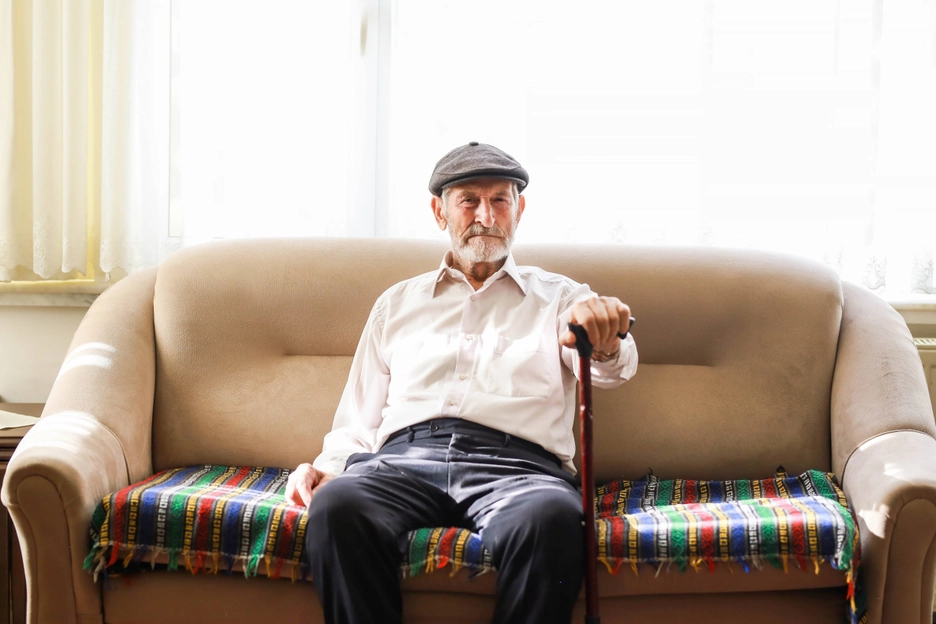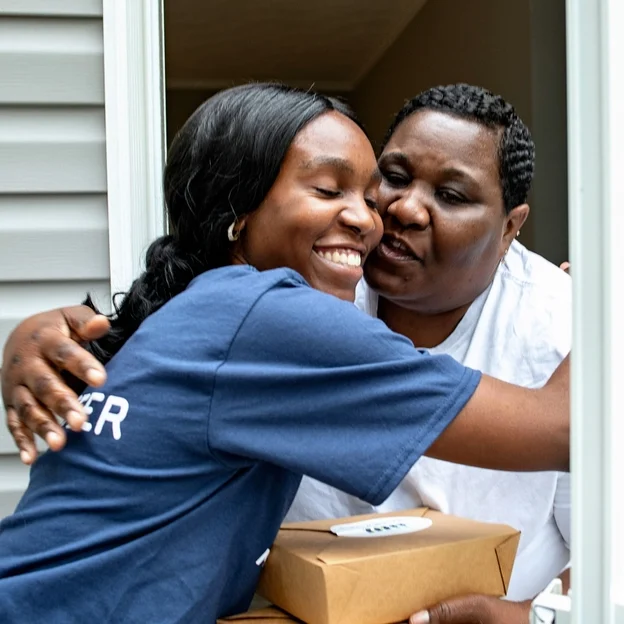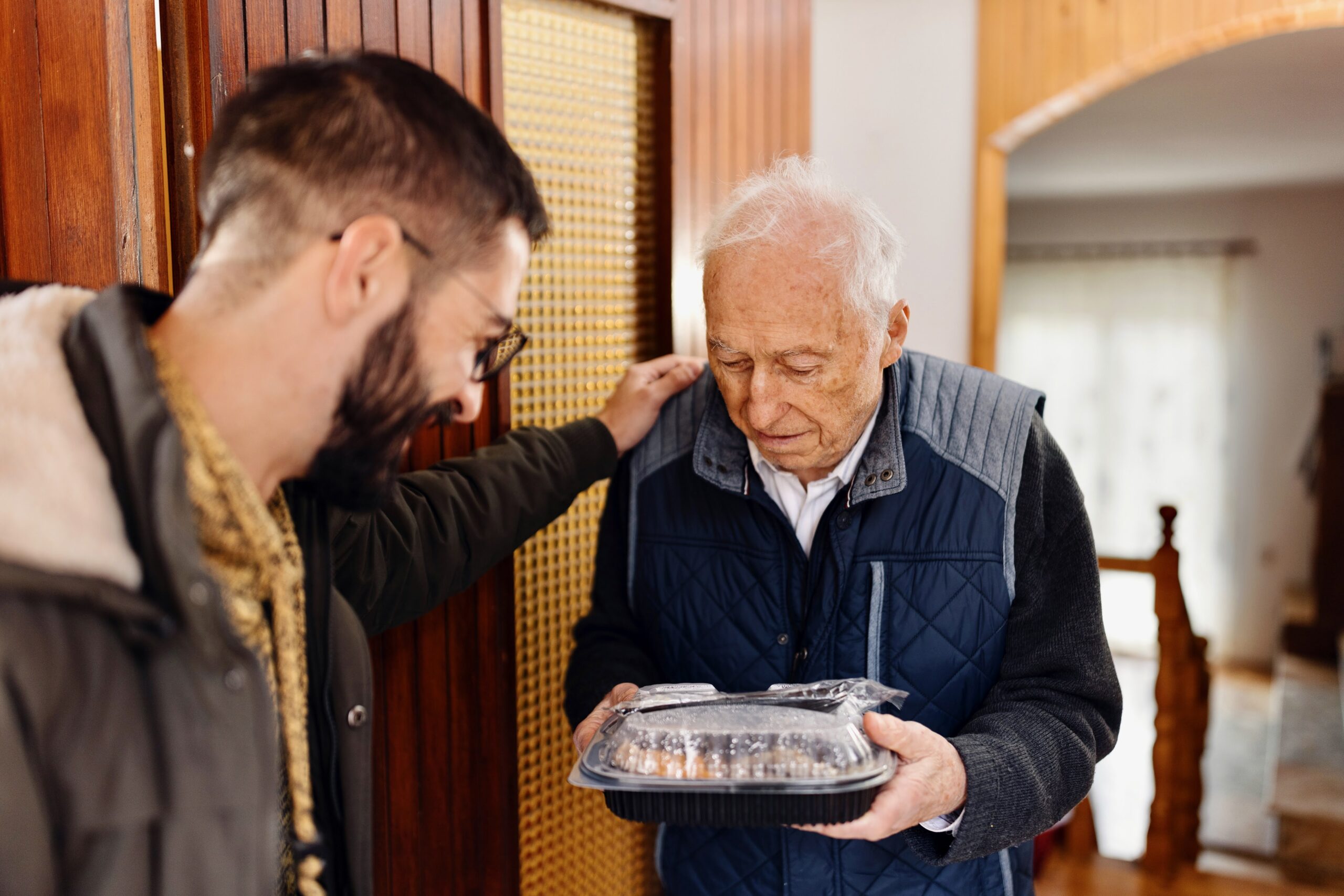No one should have to feel alone. Every person deserves the meaningful connections they need to live a fulfilling life.
For some older adults, changes like family moving far away, retirement, losing loved ones or health problems can make it harder to stay connected. For many Meals on Wheels clients, the volunteer delivering their meals is the only person they may see in a day.
Social isolation and loneliness among seniors in America are a growing health crisis.
56% of seniors feel lonely
59% of home-delivered meal participants live alone
$6.7B in Medicare spending is associated with the impacts of social isolation on older adults
Loneliness: The Emotional Toll of Feeling Alone
For many seniors, loneliness isn’t just about being by themselves. Loneliness can happen when a person feels alone, even if they are surrounded by people. This feeling of being disconnected can make it harder for them to enjoy life and take care of themselves.
Given the profound consequences of loneliness and isolation, we have an opportunity, and an obligation, to make the same investments in addressing social connection that we have made in addressing tobacco use, obesity and the addiction crisis.Dr. Vivek H. Murthy
U.S. Surgeon General, 2023 Advisory on “Our Epidemic of Loneliness and Isolation"
Isolation: The Impact of Being Physically Apart
Isolation, on the other hand, happens when someone doesn’t have enough social connections or contact with others. It can mean being physically apart from people or not talking to anyone regularly. This can include not having visitors or not talking on the phone or online.
Isolation doesn’t just feel bad — it can also have serious effects on health. It’s linked to anxiety,3 depression, 4 heart disease,5 cognitive decline6 and higher health care costs.7 For older adults, both social isolation and loneliness are common. In fact, older adults have been found to spend the most time alone of any age group.8 This can lead to greater health risks.
Looking for More Information? View Our Friendly Calling Research
Research shows that a simple phone call can make a big difference for seniors who feel alone. Friendly calling pairs volunteers with older adults to provide regular check-ins and meaningful conversations. These calls don’t just brighten a senior’s day — they also improve emotional well-being, strengthen community ties and even help identify urgent needs.

DELIVERING MOMENTS OF CONNECTION
“When I hear the knock, it’s just a good feeling.”
Too many of our aging neighbors experience hunger and isolation, wishing a helping hand would knock on their door, and they’d see a friendly face. That’s why Meals on Wheels volunteers show up at the doorsteps of millions of seniors each year, providing hope and comfort to older Americans in need. A transformational knock at the door can change lives, like it did for Wilbert.
That’s why the knock on his door signaling a visit from a Meals on Wheels volunteer is such a bright spot for him.
“It’s really a blessing to have a hot meal delivered to your door.” — Wilbert
America’s Seniors Need You
Gifts of any size will support the local providers that bring social connection and nutritious meals to seniors nationwide.
Citations
- Meals on Wheels America analysis of data from the 2022 Health and Retirement Study (HRS), weighted data. Based on UCLA 3 items: (How often do you feel that you lack companionship / left out / isolated from others?). Includes persons age 60 or older who reported “some of the time” or “often” to any of the three questions.
- Meals on Wheels America analysis of Administration for Community Living, 2023 National Survey of Older Americans Act Nutrition Program Participants. Frequency tables. Accessed at the ACL AGing, Independence, and Disability (AGID) Program Data Portal at: https://agid.acl.gov/. 2023 obtained through ACL email request.
- Santini ZI, Jose PE, York Cornwell E, et al. “Social disconnectedness, perceived isolation, and symptoms of depression and anxiety among older Americans (NSHAP): a longitudinal mediation analysis.” The Lancet Public Health. 2020;5(1)
- Robins LM, Hill KD, Finch CF, Clemson L, Haines T. “The association between physical activity and social isolation in community-dwelling older adults.” Aging & Mental Health. 2018;22(2):175-182.
- Barth J, Schneider S, von Känel R. “Lack of social support in the etiology and the prognosis of coronary heart disease: a systematic review and metaanalysis.” Psychosomatic Medicine. 2010;72(3):229-238.
- Bassuk SS, Glass TA, Berkman LF. “Social disengagement and incident cognitive decline in community-dwelling elderly persons.” Annals of Internal Medicine. 1999;131(3):165-173.
- Gerst-Emerson K, Jayawardhana J. “Loneliness as a Public Health Issue: The Impact of Loneliness on Health Care Utilization Among Older Adults.” American Journal of Public Health. 2015;105(5):1013-1019 and Valtorta NK, Moore DC, Barron L, Stow D, Hanratty B. “Older Adults’ Social Relationships and Health Care Utilization: A Systematic Review.” American Journal of Public Health. 2018;108(4)
- Pew Research Center analysis of 2014-2017 American Time Use Survey (IPUMS). https://www.pewresearch.org/short-reads/2019/07/03/on-average-older-adults-spend-over-half-their-waking-hours-alone/


